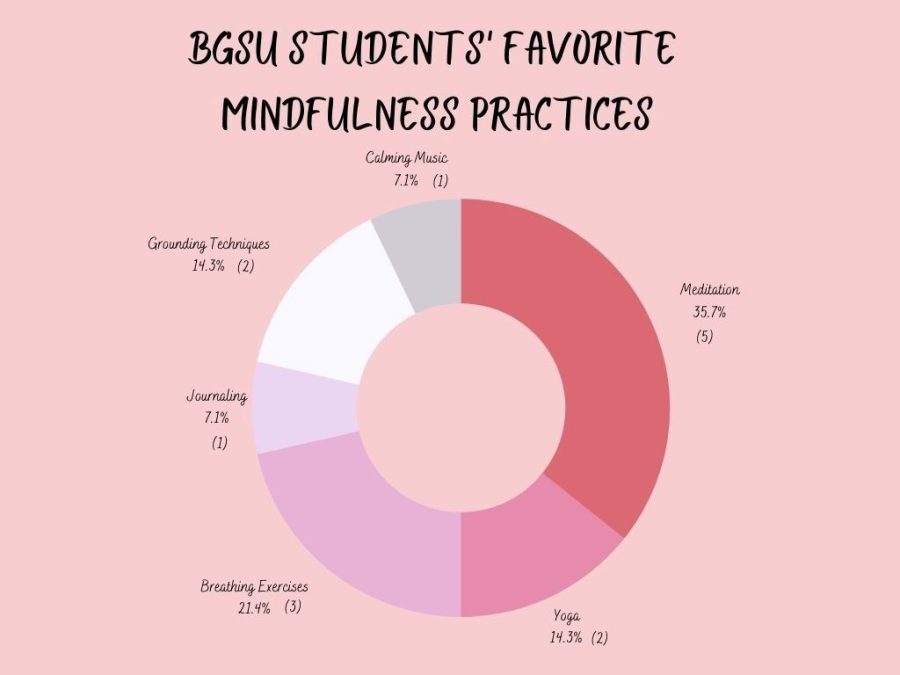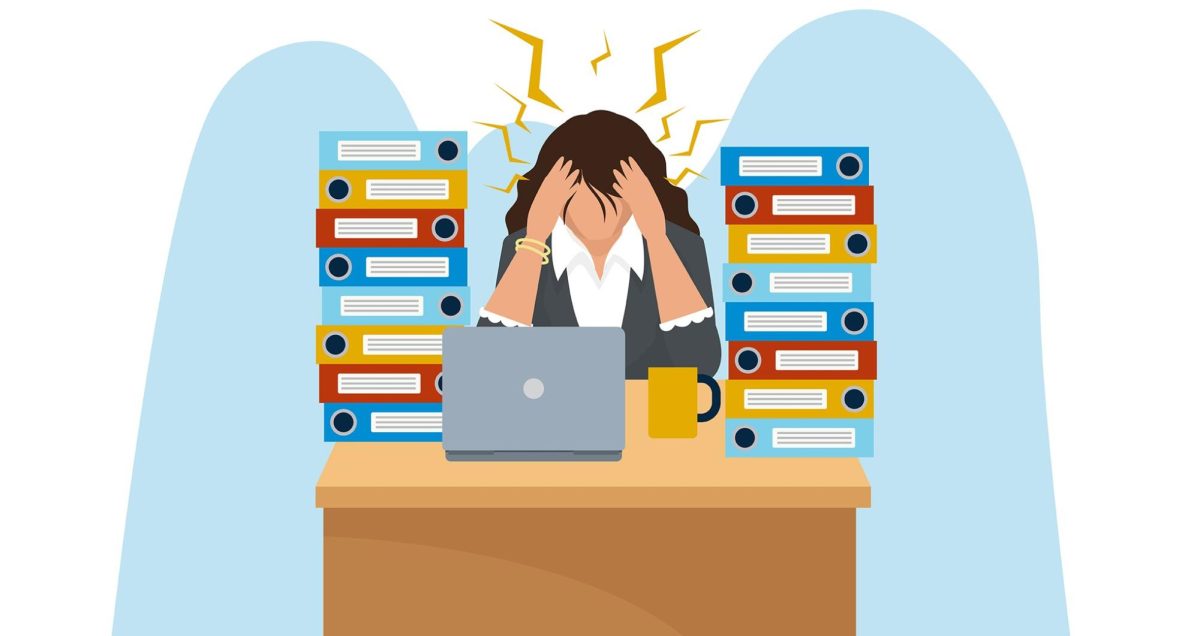As exam week approaches, BGSU students may be seeking ways to help alleviate stress.
Experts define mindfulness as the ability to be present and aware of one’s thoughts, emotions or surroundings. People achieve mindfulness by practicing meditation, yoga, and breathing exercises when they feel overwhelmed.
BGSU offers resources like the Thrive program to help students, faculty, and staff achieve the eight dimensions of well-being which Thrive defines as physical health, social connections, environment and safety, intellectual achievement, emotional well-being, spiritual well-being, occupational well-being, and financial well-being.
Ashley Hartmanm, Health Educator with a focus in Mental Health in the Wellness Connection at BGSU, helps facilitate and oversee mindfulness workshops and self-care events with Thrive. She focuses primarily on the emotional well-being aspect of the eight dimensions.
The mindfulness workshops are four weeks long, with one session per week on Zoom for an hour. Hartman says they discuss what mindfulness is, some activities participants can do to achieve it and the benefits. They primarily focus on meditation exercises.
“For me, mindfulness is anything where you are being intentionally present in the moment. It is sort of an approach in life and meditation activities can be a way to build these skills. A lot of it is becoming non-judgmental, working on acceptance with thoughts and situations and expanding your awareness outside of any hyper-fixations,” Hartman said.
Hartman said she believes although starting the practice of mindfulness can be challenging, she has heard a lot of feedback from participants in the workshops that it has helped them manage their stress. She encourages those interested, but are skeptical due to lack of time, to start off with a few minutes of meditation versus a full hour.
Third-year broadcast journalism major Taylor Kitchen said she has been practicing mindfulness since she was a child, starting when she was diagnosed with anxiety and continues to use it to cope with not only that, but her chronic illness as well.
“When I practice mindfulness, it is really helpful. A lot of it is being in tune with your body and really getting a sense of how you are feeling,” she said. “It is not always what you see on television with meditation; sometimes it is just closing your eyes and breathing or touching your surroundings to ground yourself.”
Kitchen said when she was younger, she found it hard to meditate like her counselor advised her to. Instead of meditation, though, she found other ways to get in tune with her body and emotions.
“A lot of what mindfulness is to me is tactile things. I’ll plant my feet onto the ground and ask myself what I am feeling or focus on different parts of my body to figure out what is uncomfortable,” she said. “I also use Help Now Skills, which are a set of skills that allow you to ground yourself.”
Help Now Skills are mindfulness exercises that can be done at any\ time. Some of these skills include drinking a glass of water, naming six colors you see, counting backwards from 20, and touching a surface and noticing how it feels. Kitchen said it helps bring her stress down from a level 10 to a level one.
“Mindfulness helps me put things into perspective when I have an episode from my chronic illness or am feeling extremely upset,” she said. “If I have to leave a class early and feel frustrated about it, being mindful allows me to validate what I am feeling and see what was best for me at that moment.”
Kitchen feels practicing mindfulness has taught her to be kinder to herself and respect what she thinks are her limits when it comes to her physical and mental health.
First-year journalism major Jess Oberski was introduced to mindfulness her senior year of high school when she took a yoga class to fulfill a gym credit. It was the only gym option that would not cause too much stress on her body, as she suffers from knee-pain.
Oberski said she fell in love with yoga instantly and continues to practice it and meditation at least once a week while in college. She also said since her journey with mindfulness practices, it has allowed her to take a step back from her busy lifestyle.
“I think it has helped my mind by learning ways to calm myself outside of anxiety attacks,” she said. “With yoga and meditation, it helps me when I am not stressed out or having an anxiety attack, versus my grounding techniques that help when I am panicking.”
While yoga and meditation allow her to calm her mind, she said it also has helped calm physical pain.
“It allows less stress on my mind, because I’m not thinking of my physical pain all of the time,” she said.
Oberski said using practices like yoga and meditation to achieve mindfulness has given her a way to properly calm and control her physical pain and anxiety.














